
- Subject:
- Biology
- Life Science
- Material Type:
- Unit of Study
- Provider:
- Rice University
- Provider Set:
- OpenStax College


Biology is designed for multi-semester biology courses for science majors. It is grounded on an evolutionary basis and includes exciting features that highlight careers in the biological sciences and everyday applications of the concepts at hand. To meet the needs of today’s instructors and students, some content has been strategically condensed while maintaining the overall scope and coverage of traditional texts for this course. Instructors can customize the book, adapting it to the approach that works best in their classroom. Biology also includes an innovative art program that incorporates critical thinking and clicker questions to help students understand—and apply—key concepts.
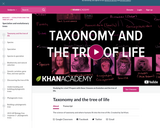
This 13-minute video lesson looks at the science of taxonomy and where humans fit into the tree of life. [Biology playlist: Lesson 62 of 71].


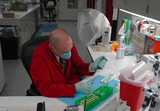
By the end of this section, you will be able to:Identify and describe the properties of lifeDescribe the levels of organization among living thingsRecognize and interpret a phylogenetic treeList examples of different sub disciplines in biology

By the end of this section, you will be able to:Identify and describe the properties of lifeDescribe the levels of organization among living thingsRecognize and interpret a phylogenetic treeList examples of different sub disciplines in biology
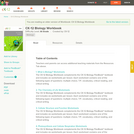
CK-12 Biology Workbook complements its CK-12 Biology book.

Biology for AP® Courses covers the scope and sequence requirements of a typical two-semester Advanced Placement® biology course. The text provides comprehensive coverage of foundational research and core biology concepts through an evolutionary lens. Biology for AP® Courses was designed to meet and exceed the requirements of the College Board’s AP® Biology framework while allowing significant flexibility for instructors. Each section of the book includes an introduction based on the AP® curriculum and includes rich features that engage students in scientific practice and AP® test preparation; it also highlights careers and research opportunities in biological sciences.

This site contains user-friendly tools to launch DNA database searches, statistical analyses, and population modeling from a centralized workspace. Educational databases support investigations of an Alu insertion polymorphism on human chromosome 16 and single nucleotide polymorphisms (SNPs) in the human mitochondrial control region.
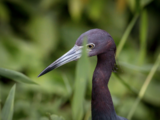
Students in this lesson will investigate the differences in avian beaks and how they are used to benefit their species and lifestyle. There is an introductory portion, a lab portion, a compare and contrast portion and conclusion/reflection.
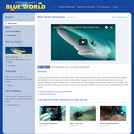
In this video, Jonathan joins Charlie Donilon on his shark charter boat in Rhode Island, Massachusetts, and learns about how shark tagging has shed light on the biology of and behavior of Blue sharks. Tagging has shown that these incredible swimmers actually migrate completely across the Atlantic ocean. Jonathan tries his hand at tagging a shark and then swims with Blue sharks. We also learn that Blue sharks are not nearly as vicious as they have been reputed to be, and the divers are actually able to pet the sharks! Please see the accompanying study guide for educational objectives and discussion points.

This resource is a video abstract of a research paper created by Research Square on behalf of its authors. It provides a synopsis that's easy to understand, and can be used to introduce the topics it covers to students, researchers, and the general public. The video's transcript is also provided in full, with a portion provided below for preview:
"Bogs are unique ecosystems, which have important ecological functions in carbon storage, climate stability, water quality, and biodiversity. The bog microbiome, composed mostly of bacteria that live in association with bog plants, plays key roles in these functions. However, the differences in associated bacteria between vascular plants and the non-vascular bryophytes that predominate in bogs remain unclear. Researchers recently used shotgun metagenomics to investigate the microbes associated with 12 representative bog species. Vascular plants tended to be colonized by specific bacteria, while bryophytes exhibited greater bacterial species richness and diversity. The two plant groups also had different marker species. The gene profiles of vascular plant- and bryophyte-associated microbes revealed functional differences, including differences in nitrogen cycling..."
The rest of the transcript, along with a link to the research itself, is available on the resource itself.
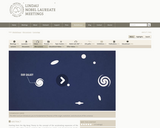
Starting from the Big Bang Theory to the concept of the accelerating expansion of the universe, this Mini Lecture explores the evolutionary origin and development of the universe. Historical as well as up-to-date lecture snippets of the physicists Brian Schmidt, George Smoot and John Mather, all held in Lindau, illustrate the concepts used to analyze the universe.

What cellular evidence do we have to construct evolutionary trees and believe that all life on Earth shares a common ancestry?

This is the second in a series of modules which detail the research of Charles Darwin and evolutionary theory. This module continues with a discussion of the processes that led to Darwin's formulation of the theory of natural selection.
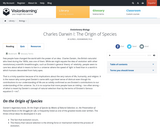
This module introduces Darwin's Galapagos travels and an introduction to the theory of evolution as a force for biological change and diversification. This is the first in a series of modules which detail the research of Charles Darwin and evolutionary theory.
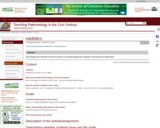
lab assignments intended to teach the basics of reading phylogenetic diagrams and parsimony optimization.
(Note: this resource was added to OER Commons as part of a batch upload of over 2,200 records. If you notice an issue with the quality of the metadata, please let us know by using the 'report' button and we will flag it for consideration.)

The topic of this video module is how to classify animals based on how closely related they are. The main learning objective is that students will learn how to make phylogenetic trees based on both physical characteristics and on DNA sequence. Students will also learn why the objective and quantitative nature of DNA sequencing is preferable when it come to classifying animals based on how closely related they are. Knowledge prerequisites to this lesson include that students have some understanding of what DNA is and that they have a familiarity with the base-pairing rules and with writing a DNA sequence.
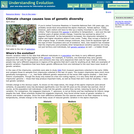
If you'd visited Tuolumne Meadows in Yosemite National Park 100 years ago, you probably would have encountered the alpine chipmunk, Tamias alpinus. Today, however, park visitors will have to hike up a nearby mountain to see one of these critters. That's because this species is sensitive to temperature and over the last hundred years of global climate change, Yosemite has warmed by about 5.5 degrees Fahrenheit. As the temperature increased, the chipmunks retreated to higher and higher elevations where it was cooler. Today, they occupy a fraction of their original range. If climate change continues, they could be squeezed right off the tops of their mountains and out of existence.